 Hi all! As everyone knows, the human body itself cannot produce minerals. But they are very important for our health and without them the body cannot function normally. Therefore, you need to eat foods that contain trace elements and minerals in large quantities.
Hi all! As everyone knows, the human body itself cannot produce minerals. But they are very important for our health and without them the body cannot function normally. Therefore, you need to eat foods that contain trace elements and minerals in large quantities.
Trace elements and minerals have a good effect on our metabolism, and provide interaction between tissues and organs, muscles and nerves. By following a varied and balanced diet, you can easily provide the body with all the necessary substances.
1) Legumes. They are often found in our food and are usually beans and peas. They are served on the table as a side dish for fried or stewed meat. But we must not forget the same about lentils. Popular chefs believe that lentils are best paired with fruit or fish. It doesn't matter what legumes you eat, as long as they are always present in your diet. The fact is that they are also rich in iron, potassium, copper, zinc, manganese and magnesium.

2) Dried apricots. Surprisingly, dried apricots have more micronutrients than fresh ones. They contain a large amount of potassium. He is responsible for regulating the water balance, and also plays big role in the transmission of pain.
But unfortunately, dried apricots contain not only trace elements, but also sugar. There are about 250 calories in 100 grams, so don't get too carried away when enjoying dried fruits.
3) Sea fish. You probably already know that sea fish is one of the best sources of iodine that our diet can provide. Especially the most iodine is found in cod.
For humans, iodine is very important, as it is responsible for the normal functioning of the thyroid gland. Its deficiency can lead to serious disorders. In addition to iodine, fish contains a lot of fluorine and selenium.
4) White mushrooms. Unfortunately, they grow only towards the forest, and are available to us seasonally. Use this time to your advantage and treat yourself to mushrooms or just mushroom soup. In addition, mushrooms will be appropriate in salads, as well as rice and noodle dishes.
5) Also rich in vitamins and trace elements include amaranth, millet, nuts, cocoa powder, soy and dairy products.
That's the whole list of the richest foods in vitamins and minerals. Eat right, and your body will thank you with a strong immune system and the absence of various diseases!
Alas, the realities of modern life are such that almost every one of us suffers from a lack of certain useful substances. And it’s good if this deficiency is diagnosed by specialists: in this case, you can find natural or pharmacy sources of this vitamin-mineral and quickly make up for the deficiency.
But most often we are dealing with beriberi in a latent form, which makes itself felt with comprehensive health problems. Hair loss, dull complexion, brittle nails, swelling, excess weight who refuses to leave, and even prolonged depression - all this can be a manifestation of beriberi of varying severity. What to do?
Of course, the simplest solution is to drink a course of multivitamins, which will immediately solve the complex lack of nutrients. However, in the long term, such a step does not solve the root cause of vitamin deficiency, because the key in this case lies in the diet. To help in compiling a menu balanced in terms of the content of nutrients, we recommend using the products from today's review as often as possible.
1. Quinoa
The most favorite cereal of vegans, athletes and food bloggers. Why kinoa? First of all, because of the content of a complete protein, which contains all the essential amino acids for humans. This is valuable for anyone who follows a plant based diet. active image life or just take care of your health. Well, it's hard not to note the high content of other nutrients we need daily: calcium, magnesium, folic acid and phosphorus.
2. Spinach
Spinach - an infrequent guest on your table? We advise you to urgently fix this, once and for all, falling in love with this most useful leafy vegetable. Just look at this list: vitamin K, calcium, magnesium, antioxidants, fiber. And at the same time, the calorie content is only 22 calories per 100 grams! Spinach has a beneficial effect on the skeletal system, protects against the development of osteoporosis, strengthens the immune system and helps to lose weight.
3. Avocado
Nutritious oily avocado is a unique fruit of its kind. Among fans of natural nutrition, avocados are valued for their large amount of vitamin E, C and healthy monounsaturated fats. It is thanks to the content of these substances that regular consumption of avocados normalizes cholesterol levels and helps reduce the risk of cardiovascular disease.
4. Honey
It is no secret that it is better to completely refuse the use of white sugar, replacing it with natural sweeteners. The easiest way is to sweeten drinks and dishes with honey. In addition to natural sweetness, honey has pronounced antibacterial and antifungal properties. And the high content of flavonoids helps prevent heart disease and cancer.
5. Almond
Exquisite taste is not the only advantage of this nut. We advise you to include it in your daily diet for everyone who cares about appearance and figure. Due to the high content of fiber and protein, almonds satisfy hunger well and leave a long feeling of satiety. And the presence of vitamin E and magnesium improves the condition of the skin and hair.
6. Bitter chocolate
In moderation, high-quality dark chocolate with at least 70% cocoa will provide powerful support to the body. First of all, we note the high amount of flavonoids that have an antioxidant effect. Chocolate has a beneficial effect on the heart, activates blood flow, lowers cholesterol, prevents blood clots and even improves mood.
7. Flaxseed
According to research, it is flax seeds that contain the maximum amount of omega-3 fatty acids among all products. These compounds have a beneficial effect on the composition of the blood and prevent the formation of blood clots. The second tangible plus from the use of flaxseeds is a large amount of soluble and insoluble fibers, which makes them an excellent product for lowering cholesterol and preventing diseases of the cardiovascular system.
8. Olive oil
A valuable component of the Mediterranean diet and simply delicious dressing. Olive oil contains a wide variety of polyphenols that act as antioxidants and anti-inflammatory compounds. This vegetable oil is also an excellent source of healthy fats, including monounsaturated fats and omega-9 fatty acids.
9. Natural yogurt
Due to the high protein content, natural yogurt easily satisfies hunger without feeling heavy. In general, the beneficial effect of a portion of yogurt lasts even after you have had a bite of it - the beneficial probiotic bacteria contained in it normalize bowel function and increase immunity. It is important to understand that only natural, unsweetened yogurt provides health benefits.
10. Kale
Just the facts: one cup of kale contains 180% of the recommended daily intake of vitamin A, 200% of the daily value of vitamin C, and only 36 calories. Be sure to find this leafy vegetable in the market and add it to smoothies, salads, and hot dishes regularly.
11. Goji Berries
A thousand year old superfood that has been traditionally used in Chinese medicine. Looking at the composition of goji, it becomes clear why they were credited with the ability to prolong life. These berries are rich in antioxidants that protect the body from premature aging. And the high content of vitamin C and beta-carotene lowers cholesterol and strengthens the immune system.
Want to get all the nutrients you need naturally? We offer best products containing the 20 most important nutrients.
From Vitamin A to Zinc
To be in good shape, your body needs a certain amount of nutrients ranging from disease-fighting antioxidants to bone-strengthening heavy metals. While you can get many of these nutrients from food supplements, almost all of them are also found in the foods you eat or should be eating every day. Do you want to get vitamins and minerals naturally? Here are the best foods that contain the 20 most important nutrients (and recipes to enjoy them in a healthy way). 
Vitamin A
Why you need it: Vitamin A plays a key role in maintaining immunity, in the reproductive process, and it is also very important for vision. Vitamins, which include beta-carotene, help the retina, cornea and the lining of the eyes to function properly. Where to get it: Vitamin A is found in high concentrations in sweet potatoes; just one medium baked sweet potato contains over 28,000 international units (IU) of vitamin A, or 561% of the recommended daily allowance. Beef liver, spinach, fish, milk, eggs, and carrots are also good sources of vitamin A.
Vitamin B6.
What it's for: Vitamin B6 is a generic term for six various compounds, which have a similar effect on the body. These compounds are essential for digestion, increase hemoglobin (part of your red blood cells), stabilize blood sugar, and produce antibodies that fight disease. Where to get it: Fish, beef liver, and poultry are good sources of vitamin B6, but the good news for vegetarians is chickpeas or chickpeas. One cup of canned chickpeas contains 1.1 milligrams (mg) of vitamin B6, or 55% of the Daily Value.
Vitamin B12
What it's for: Vitamin B12 has great importance for healthy nervous system, for the formation of DNA and red blood cells. Prevents anemia, which causes fatigue and weakness. Where to get it: Animal products are the best source of B12. Cooked clams have the highest concentration, 84 micrograms (mcg) - 1.402% DV - in just 3 ounces. (One milligram = 1,000 mcg.) Vitamin B12 is also found in beef liver, trout, salmon, and tuna, and is added to many breakfast cereals. 
Vitamin C
What it's for: Vitamin C is an important antioxidant and is also a necessary ingredient in several key bodily processes such as protein metabolism and neurotransmitter synthesis. and the synthesis of neurotransmitters). Where to get it: Most people think of citrus fruits when they think of vitamin C, but sweet red peppers actually contain more vitamin C than any other food: 95 mg per serving (well ahead of oranges and just edging out orange juice, at 93 mg per serving). Other sources a large number vitamin C is kiwi, broccoli, Brussels sprouts and melon.
Calcium
What it's for: Calcium is used in many ways by the body. More than 99% of it is necessary for strengthening teeth and bones, and the rest - for blood vessels and muscles, cellular communication and hormone secretion. Where to get it: Dairy products contain the highest amount of naturally occurring calcium; Plain low fat yogurt leads the way with 415 mg (42% DV) per serving. Dark greens (like collard greens and bok choy) are another natural source of calcium that can also be found in fortified fruit juices and cereals.
Vitamin D
What it's for: Vitamin D, which our bodies produce when our skin is exposed to sunlight, stimulates calcium absorption and bone growth. It is also important for cell growth, immunity, and reducing inflammation. Where to get it: Fatty fish, including swordfish, salmon, and mackerel, are among the few natural food sources of vitamin D. (Cod liver oil leads at 1,360 IU per tablespoon, and swordfish ranks second at 566 IU, or 142% of the DV.) Most people get their vitamin D from foods such as milk, breakfast cereals, yogurt, and orange juice. 
Vitamin E
What it's for: Vitamin E is a powerful antioxidant that protects cells from harmful molecules known as free radicals. It is important for immunity, and for the healthy functioning of blood vessels, as well as for blood clotting (for example, when you cut yourself). Where to get it: While wheat germ oil contains more vitamin E than any other food (20.3 mg per serving, or 100% DV), most people find it easier to get vitamin E from sunflower seeds (7.4 mg). per ounce, 37% DV) or almonds (6.8 mg per ounce, 34% DV).
Folate (folic acid)
Why you need it: For pregnant women, folate, a B vitamin, helps prevent birth defects. For the rest, it helps in the development of new tissues and proteins. Where to get it: Folate is found in many foods, including leafy green vegetables, fruits, nuts, and dairy products. Beef liver has the highest concentration of this vitamin, but if you don't like liver, then eat spinach, it also has a lot of this vitamin: 131 mcg in half a cup (cooked), or 33% of the daily value. Folic acid, artificial form folate is also added to many breads, cereals and cereals.
Iron What is it for?
Proteins in our body use this metal to transport oxygen and cell growth. The majority of iron in the body is found in hemoglobin, a protein in red blood cells that carries oxygen to tissues throughout the body. Where to get it: There are two forms of iron in food: heme iron (found in animal foods like red meat, fish and poultry) and non-heme iron (found in plant foods like lentils and beans). Chicken liver contains the highest amount of heme iron, 11 mg per serving or 61% of the DV.
 Vitamin K
Vitamin K
Vitamin K is an essential element in coagulation or blood clotting. Without it, your body won't be able to stop the bleeding when you get hurt or cut. Where to get it: Green leafy vegetables are the best source of this vitamin, also known as phylloquinone. Kale contains the most of this vitamin (1.1 mg per cup), followed by spinach (about 1 mg per cup), then plants such as turnips, mustard and beet greens.
Lycopene (antioxidant)
This chemical pigment is found in red fruits and vegetables and has antioxidant properties. Some studies show that lycopene may protect against a number of diseases, including heart disease and certain types of cancer. Where to get it: Tomatoes are the best-known source of lycopene and, of course, it is found in foods made from tomatoes such as sauces, pastes, and purees, with up to 75mg of lycopene in a cup. Raw, unprocessed tomatoes are not as rich in lycopene, even watermelon contains more lycopene - about 12 mg per slice than a tomato, where it is only 3 mg.
Lysine
What it's for: Lysine, also known as L-lysine, is an amino acid that helps the body absorb calcium and form collagen for bones and connective tissues. He also plays important role in the production of carnitine, a nutrient that helps regulate cholesterol levels. Where to get it: Protein-rich animal products, especially red meat, are a good source of lysine, as are nuts, legumes, and soybeans.
 Magnesium
Magnesium
Why you need it: The body uses magnesium in more than 300 biochemical reactions, which include maintaining muscle and nerve function, normalizing the rhythm of the heart, and maintaining bone strength. Where to get it: Wheat bran has the highest amount of magnesium per serving (89 mg per quarter cup, or 22% of your daily intake), but you must consume unrefined grains to reap the benefits, as when the germ and bran are removed from wheat (as in white and refined bread), magnesium is also lost. Other excellent sources of magnesium are almonds, cashews, and green vegetables such as spinach.
Niacin
What it's for: Niacin, like its B-vitamin brethren, is essential for converting food into energy. It also helps the digestive and nervous systems, as well as the skin, to function normally. Where to get it: Dry yeast is one of the main sources of niacin, but a more appetizing option is peanuts or peanut butter; one cup of raw peanuts contains 17.6 mg, over 100% of the daily value. Beef and chicken liver are especially rich in niacin.
Omega 3 fatty acids
What they're good for: We don't like fats well, but certain types of fats, including omega-3 fatty acids, a type of polyunsaturated fat, are actually very healthy in moderation. Omega-3s are good for the brain and also reduce inflammation. Where to get it: There are two categories of omega-3 fatty acids: alpha-linolenic acid (ALA) is found in plant sources such as vegetable oils, green vegetables, nuts and seeds, while eicosapentaenoic acid (EPA) and docosahexaenoic acid (DHA) - which are in the second category - are found in oily fish. One bowl of tuna salad contains about 8.5 grams of polyunsaturated fatty acids.
 Potassium
Potassium
What it's for: Potassium is a critical electrolyte needed to control the electrical activity of the heart. It is also used to build proteins and muscles, and convert carbohydrates into energy. Where to get it: One medium baked sweet potato contains about 700 mg of potassium. Tomato paste, beet greens, and regular potatoes are also good sources of potassium, as are red meat, chicken, and fish. Riboflavin What it's for: Riboflavin, another B vitamin, is an antioxidant that helps the body fight disease, produce energy, and produce red blood cells. Where to get it: Beef liver is the richest source of riboflavin, with about 3 mg of riboflavin per 3 ounces. Don't like liver? Fortunately, fortified cereals (such as Total or Kellogg's All-Bran) contain almost as much of the vitamin.
Selenium
What it's for: Selenium is a mineral with antioxidant properties. The body needs a small amount of selenium, but it plays a significant role in the prevention of chronic diseases. It also helps regulate thyroid function and the immune system. Where to get it: Just six to eight Brazil nuts contain 544 micrograms of selenium, or 777% of the daily value. But too much selenium is bad, so stick with the other option—canned tuna (68 mg in 3 ounces, equals 97% of your daily value)—except in special circumstances.
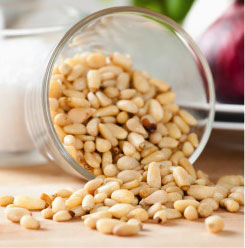 Thiamine
Thiamine
What it's for: Thiamine, also known as vitamin B1, helps the body convert carbohydrates into energy. In addition, it is very important for maintaining the proper functioning of the brain and nervous system. Where to get it: Dry yeast is the best source of thiamine, as is riboflavin, with 100 grams of yeast containing 11 mg of thiamine. You can also get thiamine from other foods, such as pine nuts (1.2 mg per serving) and soy (1.1 mg).
Zinc
Why you need it: Zinc is essential for the immune system (you can see it in cold remedies) and plays an important role in the sense of touch and smell. Where to get it: Oysters contain the highest amount of zinc of any food (74 mg per serving, or nearly 500% of the DV), but people are more likely to get their zinc from red meat and poultry. For example, three ounces of roast beef contains 7 mg of zinc. Crab is also a good source of zinc.
Adhering to the principles of proper, balanced nutrition, it is necessary to provide your diet with products that contain the substances necessary for the life of the body. It is a mistake to think that by giving up fats and carbohydrates, the weight will automatically return to normal, and the toxins will stop accumulating. All vitamins and microelements must be kept in a certain norm, you just need to learn how to choose the “right” products.
How to eat right: a balanced diet
The most important condition is that nutrition must be balanced, that is, the content of proteins, fats and carbohydrates in products, as well as all necessary and trace elements, must be in the norm necessary for the body.
- Try to avoid alcohol and carbonated drinks.
- Do not abuse semi-finished products, as well as pickles, marinades, fried and smoked foods.
- Remember that food colorings, preservatives and various flavor enhancers are very unhealthy.
- Meat and fish are best steamed or grilled.
- Be sure to run tap water through the filter.
- If you do not know how to eat right, eat as many vegetables and fruits as possible, especially seasonal ones.
- If possible, replace sugar with natural honey.
- For a balanced diet, along with proteins, fats and carbohydrates, include herbal teas and spices in your diet.
The functions of proteins, fats, carbohydrates and the products in which they are contained will be discussed below.
Squirrels in a balanced diet is construction material, which is used for the process of regeneration of cells and tissues, as well as the growth of the body. They consist mainly of amino acid molecules.
Main functions:
- control over the formation of T-lymphocytes;
- control of phagocytosis;
- synthesis of immunoglobulin group M;
- production of lymphocytes in the thymus.
Foods for a balanced diet rich in proteins:
- milk and dairy products
- bread, cereals
- legumes
- nuts
Fats are nutrients that give the body energy. After processing, fats are absorbed by the lymphatic capillaries and enter the bloodstream. The benefits of fats are the higher, the more they contain polyunsaturated fatty acids, on which human health and longevity directly depend: after all, the main purpose of these acids is to collect, bind and neutralize all substances harmful to our body and unnecessary to it.
Main functions:
- control the activity of cells that process toxic substances;
- have antibacterial and anti-inflammatory action;
- contribute to the death of tumor cells (polyunsaturated fatty acids).
Foods rich in fats:
- fatty meats;
- eggs;
- milk, butter, cheese, cream.

Foods rich in polyunsaturated fatty acids:
- fatty varieties sea fish(salmon, herring, mackerel);
- vegetable oils (sunflower, olive, linseed, rapeseed);
- nuts and seeds.
Carbohydrates are the body's main source of nutrients. vital energy. During digestion, they turn into monosaccharides, and then into glucose, which enters.
Main functions:
- control over the activity of cells that process toxic substances.
Carbohydrates are found in large quantities in the following foods:
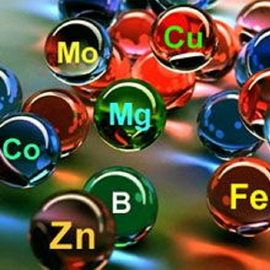
trace elements- these are contained in the body in low concentrations of chemical elements that are necessary for its normal functioning.
The most tangible blow to immunity is caused by a deficiency that is necessary for the normal functioning of the circulatory system.
With its deficiency, the level of hemoglobin in the blood decreases, as a result of which all tissues and organs of our body begin to suffer from oxygen starvation.
In addition, zinc and selenium are extremely important for maintaining immunity.
Main functions:

Foods rich in trace elements:
- liver, buckwheat, beets, nuts, seeds (iron);
- apples, papaya, tomatoes (potassium);
- citrus fruits, oysters, cereal grains, mushrooms, grapes, walnuts (selenium);
- mussels, crabs, carrots, cauliflower, ginger (zinc);
- garlic (sulfur);
- seaweed, sorrel, persimmon, feijoa (iodine).
One of the most effective natural immunomodulators is garlic.
For the first time, its antiseptic properties were scientifically substantiated by Louis Pasteur in 1858. However, people have noticed the unique ability of garlic to resist diseases for a very long time. Also in Ancient Egypt it was given to the builders of the pyramids to strengthen their forces. And in Ancient Greece this product was mandatory included in the diet of athletes participating in the Olympic Games.
Adolescents, including those in wealthy families, often have a concomitant dietary iron deficiency due to age characteristics nutrition (the so-called "adolescent diet" - chips and cola). In girls, the consumption of iron increases even more against the background of the first menstrual blood loss.
Delicious and simple recipes for proper, healthy eating (with photo)
Below are recipes for a proper balanced diet that are easy to cook on your own.
Spicy summer salad

Ingredients:
4 ripe avocados 1 pink grapefruit 1 red onion 1 large handful mint leaves 3 tbsp. tablespoons of olive oil, 1 teaspoon of liquid honey, 1 teaspoon of mustard.
Peel and grate the onion. Peel the avocado, remove the pits, and cut the flesh into slices. Peel the grapefruit and cut into slices. Mix olive oil, honey, onion and mustard in a bowl. Add avocado, grapefruit and mint leaves, mix well. This salad recipe proper nutrition serve as an appetizer.
Andalusian salad

Ingredients:
1 head of lettuce, 4 oranges, 2 carrots, 1 bunch of cilantro, juice of 1 lemon, 150 ml of apple juice.
Peel and grate the carrots, chop the cilantro. Peel oranges, divide them into slices. Break the lettuce into leaves and chop. Mix all the ingredients in a bowl, salt, season with apple and lemon juice and mix well. It is recommended to prepare this salad according to the recipe for a balanced diet just before consumption.
nettle soup
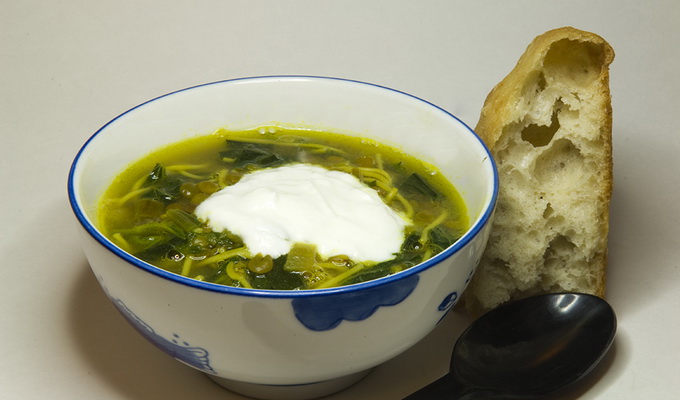
Ingredients:
450 g of fresh young nettles, 1 onion, 2 cloves of garlic, 400 g of potatoes, 1 liter of vegetable broth, 25 g of butter, 150 ml of cream, salt and pepper to taste.
Peel and finely chop the onion, crush the garlic. Melt the butter in a large saucepan and sauté the onion and garlic for 10 minutes. Cut nettles, peel and cut potatoes. Add them to the pot and cook for 2 more minutes. Then pour the broth, cover, bring to a boil and cook for 15 minutes. Salt, pepper, mix well. Pour in the cream and serve.
See how these recipes for proper nutrition look like in the photos presented on this page:
Beetroot with sesame

Ingredients:
4 young small beets (with tops), 2 teaspoons of sesame seeds, 1 tbsp. spoon of soy sauce, 1 tbsp. spoon of olive oil, 1 tbsp. a spoonful of chopped ginger root, 2 carrots.
Peel the beetroot, cut into cubes and steam for 30-40 minutes until it becomes soft. Leave the tops for a couple of 3-4 minutes, until they slightly wilt. Peel and grate carrots. Roast the sesame seeds in a dry frying pan until Brown. Mix soy sauce, olive oil and ginger in a blender. Then add the rest of the ingredients and mix well. It is recommended to prepare immediately before use.
Guava puree

Ingredients:
12 guava fruits, 115 g powdered sugar, 125 ml lemon juice, 1/2 tsp vanilla extract.
Cut guava fruits in half, add 1 cup of water and simmer for 8 minutes. Let cool, then pass the pulp through a sieve; discard the seeds. Place the guava pulp in a large saucepan, add the icing sugar, lemon juice and vanilla extract. Stir, bring to a boil, then simmer this delicious, nutritionally-friendly puree for 10 minutes until thickened.
Sweet and sour lentils
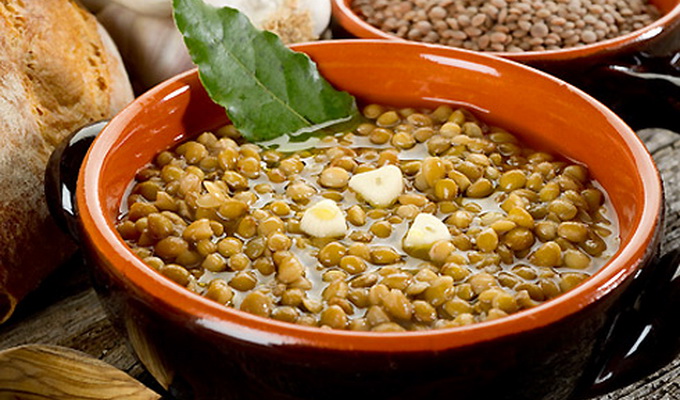
Ingredients:
250 g red lentils, 2 tbsp. tablespoons olive oil, 2 dried chili peppers, 1/2 teaspoon mustard seeds, 2 tbsp. spoons of soy sauce, 1 tbsp. spoon of granulated sugar, 4 tbsp. spoons of pineapple juice, 1 tbsp. a spoonful of white wine vinegar.
To prepare this simple recipe proper nutrition you need to finely chop the chili pepper. Place the lentils in a saucepan, cover with water and bring to a boil. Cover and simmer for 40 minutes, then drain the water. Pour the oil into the pan and fry the pepper and mustard in it for 3 minutes. Add soy sauce, granulated sugar, pineapple juice, vinegar, mix everything well and pour the lentils with the resulting mixture. Add 125 ml of water, stir and cook for another 10 minutes.
Garnish of walnuts, apples and celery
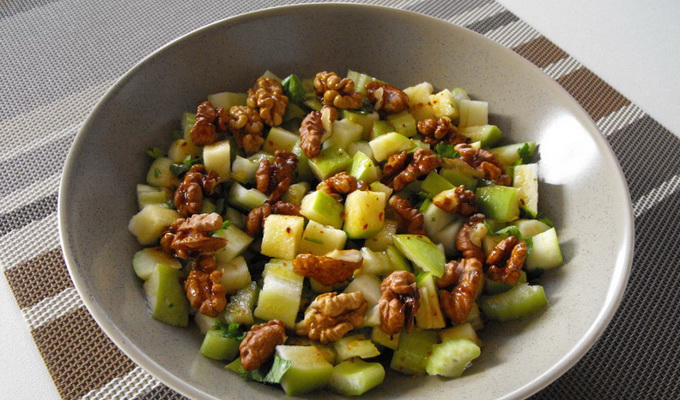
Ingredients:
225 g walnuts, 2 apples, 2 celery stalks, 1 large onion, 85 g butter, 350 g breadcrumbs, 1 large egg, 125 ml milk.
Finely chop the onion and celery, chop the nuts. Peel and cut the apples, beat the egg. Fry the onion and celery in a skillet with butter. In a bowl, mix apples, breadcrumbs and walnuts. Add onion, celery, egg, pour in milk and mix everything well. Lay out a side dish prepared according to the recipe of the correct and healthy eating on a baking sheet and bake in a preheated oven at 180°C for 30 minutes.
Dessert of dried apricots and cashews

Ingredients:
50 g oatmeal, 50 g cashews, 150 g dried apricots, 100 g raisins, 4 tbsp. tablespoons fresh orange juice, 2 tbsp. spoons of sunflower seeds, 2 tbsp. spoons of pumpkin seeds.
Place the oats and cashews in a dry skillet and toast over moderate heat for 3 minutes, stirring occasionally, until golden brown. Let the mixture cool down. Finely chop dried apricots, put them together with raisins in a food processor, pour orange juice into it and turn it all into a puree. Transfer it to a bowl. Finely grind oatmeal, nuts and seeds in a food processor. Add them to the fruit puree and mix until smooth. Put this dish according to the recipe for proper nutrition in a bowl, flatten and refrigerate for 1 hour.
Date Bars

Ingredients:
125 g of unsalted butter, 200 g of finely chopped dried dates, 125 g of flour, 1 teaspoon of soda, 115 g of granulated sugar, 125 g of oatmeal, 4 tbsp. spoons of sunflower seeds
Put the dates in a saucepan and pour them with 1 cup of water, bring to a boil. Then reduce the heat and simmer for 20 minutes until the dates are soft and the water is completely absorbed by the fruit. Using a blender, turn the dates into a puree and cool it. Preheat oven to 180°C. In the meantime, mix flour, soda, granulated sugar, oatmeal and seeds in a bowl. Add oil and rub well. Pour 3/4 of the mixture into an oiled baking dish and tamp down with a spoon. Then lay out the next layer - mashed dates and, finally, the third - the rest of the mixture. Bake for 25 minutes until golden, then let cool. Cut into 16 pieces (bars).
The article has been read 3,830 times.









